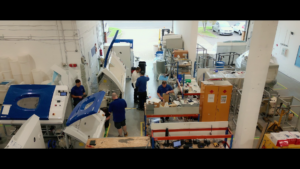The importance of corrosion testing in the aerospace industry
We are proud to supply corrosion testing equipment to a huge number of companies in the aerospace sector, covering everything from commercial air traffic to defence and space exploration.
Corrosion testing is vital in the aerospace industry for several reasons:
- Harsh Environmental Conditions: Aerospace components are exposed to extreme conditions, including high altitudes, varying temperatures, humidity, and exposure to saltwater during take-off and landing.
- Safety and Reliability: Corrosion can compromise the structural integrity of aircraft, leading to potential failures.
- Cost Efficiency: Detecting corrosion early can prevent costly repairs and replacements.
- Regulatory Compliance: The aerospace industry is heavily regulated, and corrosion testing is often required to meet stringent safety and performance standards.
- Innovation and Material Development: Corrosion testing drives the development of new materials and coatings that are more resistant to corrosion, enhancing the overall performance and durability of aerospace components

By incorporating rigorous corrosion testing protocols, the aerospace industry can ensure that its materials and components are robust, safe, and reliable, ultimately leading to more efficient and longer-lasting aircraft.
One of the most commonly used test standards within the aerospace industry is ASTM G85 Annexe 4 as this simulates exfoliation corrosion. Exfoliation corrosion is a specific type of intergranular corrosion that primarily affects metals, especially aluminium alloys. This must be closely monitored in aircraft structures, where maintaining the integrity of materials is critical for safety.
The range of samples that are tested by the aerospace industry can range from the smallest rivets to entire sections of aircraft. Larger components such as aircraft seating and engine parts that are too large for standard chambers can be accommodated in our CorroFlex chambers, these are available in a wide range of sizes and are the perfect solution for larger samples where a walk in room would have redundant space.

As the industry is increasingly looking at alternative fuels and composite materials to minimise the environmental impact of air transport, this means even greater investment in research and testing.
The rise in popularity and use of unmanned aircraft and drones presents another growing area of the market, with future plans for widespread delivery services via drones in many countries the most obvious example. The possibilities for drone use in search and rescue operations are currently being explored and we expect to see some major innovations in this field over the coming years.

Ascot Chambers are used by aerospace manufacturers around the world to ensure reliable, repeatable testing.
Contact us for further information and quotations.
























